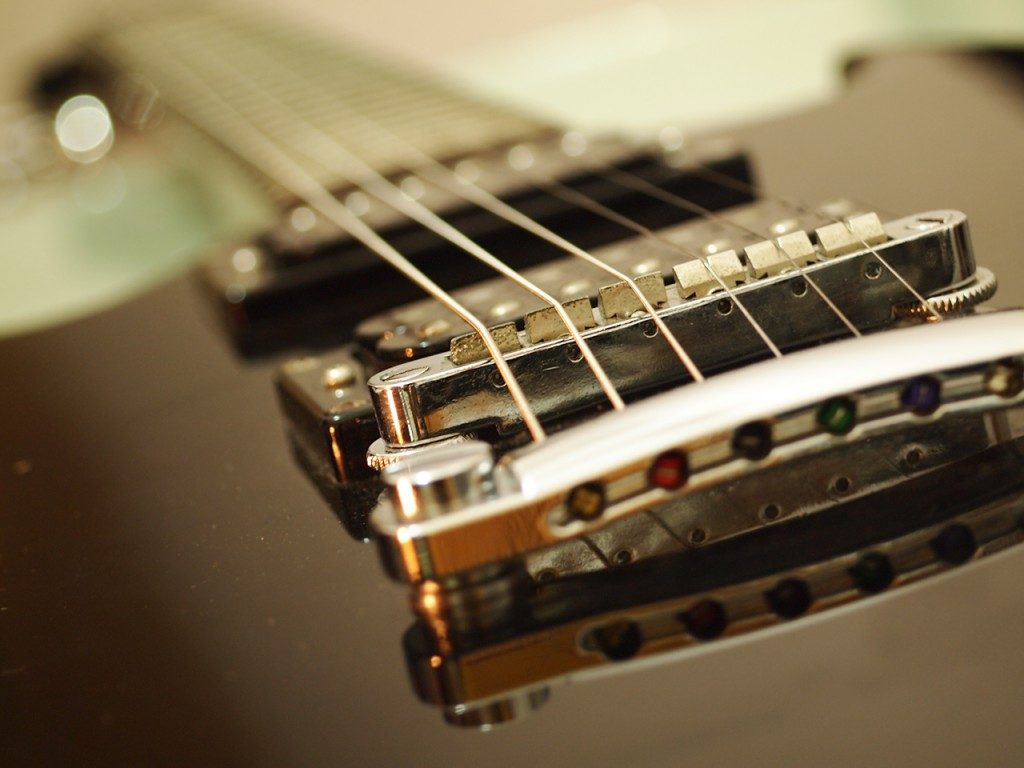GAUGING THE RIGHT FIT
When it comes to selecting guitar strings, gauge is the most obvious measure used to differentiate between sets. It simply refers to the thickness of the guitar strings, with the lightest end of the scale a .008, and the heaviest, a .056. Electric guitar six-string sets are denoted by the size of the smallest or first string, and that of the largest or sixth string, of which the most popularly used is the standard .010-.046 gauge. However set gauges typically range from the ‘extra super light’ .008-.038, to the ‘heavy’ .012-.054. So what are the differences that a thousandth of an inch here or there can make?
D’Addario Guitar Strings
The main benefit of playing with a lighter gauge of string is easier playability due to decreased string tension. This promotes fast, precision playing by allowing easier bending of notes and fretting – perfect for working on an extra-low action. The most popular exponent of standard tuning and fast playing is the .009-.042 gauge, which offers less tension without too significantly compromising sonic girth.
However there are drawbacks to using a lower gauge, including the potential for them break more easily, poorer tuning and intonation stability, and potentially less sustain. The likelihood of unwanted fret buzz is also increased, due to the lower action. As such, sound technique is essential to getting the most out of a lighter gauge strings
On the other end of the spectrum a heavier gauge of .011-.048 or .012-.054 offers greater string tension and, in turn, the stability to play hard; dig in and attack with some added stylistic venom, which is the prime tonal antidote for the use of low reaching alternate tunings – say your open D or a dropped D. With this increased tension the strings are more likely to stay in tune, while it also helps to dampen irritant fret buzz. Yet there are consequences of working with thicker strings – most notably the greater finger pressure required to fret and bend notes.
MATERIAL MATTERS
Electric guitar strings are manufactured steel, nickel, and other magnetically conductive metal alloys, yet it’s the choice of plating or coating matched with the metal alloy that is responsible for providing a unique tonal foundation.
Ernie Ball Slinky Cobalt Strings
Nickel-plated steel strings offer a balanced tonal palette, a slightly brighter tinge balanced with warmth for overall versatility, while pure nickel strings provide added warmth for added pop and snap. Stainless steel strings bring to the fore a brighter bite and liveliness, underpinned by enhanced sustain. For jazz and blues players, chrome strings are usually the preferred choice, due to their enriched warmth and tonal roundness. And then there are cobalt strings that, with a deeper magnetic connection, act to get the most out of your pickups.
WOUND THE RIGHT WAY
The way your strings are wound affects both tone and playability. Roundwound is the most commonly used method for winding strings, signified by the noticeably grooved texture. With this winding you get greater sustain, responsiveness, and overall energy from the strings. A consequence of which is some squeaking and greater finger noise due to the increased friction.
Flatwound and Roundwound Guitars Strings
Halfround strings, on the other hand, have a smoother feel, with darker tone and less attack. While flatwound strings utilise an extra layer of ribbon winding that is polished, slick and smooth, and produces a mellow tonal output – the even response well suited to jazz guitarists.






